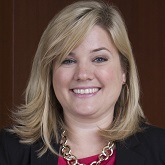When Brian McCarver and Jonathan Freeman decided to start an advisory board more than 10 years ago, the goal was to help meet centers of influence (COIs) who could help them build a retirement business. They enlisted a mixed dozen professionals to help, including accountants, attorneys, payroll specialists, recordkeepers, benefits specialists, clients and prospective clients.
What they wanted from the board was independent opinions, but they also wanted advocacy from outside interests that could help them grow. The board’s first advice: Change your name. The two were using their surnames and the board suggested they try something more distinctive. This led the Pennsylvania-based firm to rebrand as Stonebridge Financial, a change that has helped them build a name in their community. And it is just one example of the ways the board has helped them over the years.
McCarver and Freeman say their board has helped them grow at an annual rate of 10-15%, to the nearly $2 billion firm they have become, serving equal parts wealth management and retirement clients. The board has helped generate referrals to grow not only on the retirement side but also the wealth management business, and it’s generally helped the firm evolve. Over the years, the board has driven the Stonebridge Financial team to leave their wirehouse, bring on new talent and become a registered investment advisor. And although the two admit they haven’t always followed the board’s advice, it has always been spot on.
Stonebridge’s story is similar to those heard from other advisors with established boards, according to Matt Robinson and Melissa Sloane, divisional managers at Capital Group. While not all advisors are using boards, those that do say there is no better channel to test new ideas and improve the progress of your team. A board can also help with networking and getting new eyes focused on your business.
“If done well, an advisory board is one of the best ways to transform clients into advocates,” Robinson says. “Ask people for their help and watch how quickly they become invested in your success.”
Still, advisory boards require some work to get right. If you are looking to start an advisory board here are some best practices to consider.



